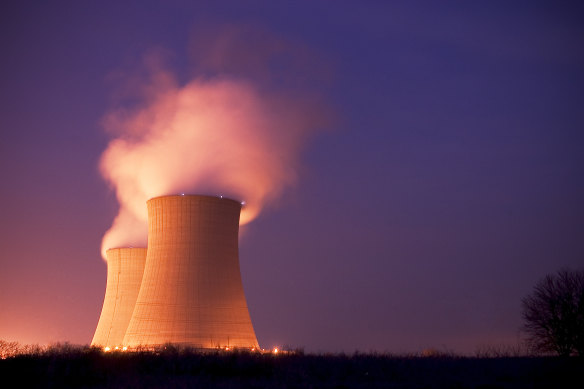
A massive expansion of renewable energy will still be key to driving Australia’s transition away from coal and reaching net-zero emissions by 2050, new modelling shows, even if the Coalition wins the next election and implements a plan to deploy nuclear reactors across the country.
Opposition Leader Peter Dutton rekindled Australia’s climate wars this month, vowing to abandon the government’s target for renewable energy to account for 82 per cent of the grid by 2030, and instead pushing to build seven nuclear generators to achieve the longer-term ambition of reaching net-zero emissions by 2050.

Opposition Leader Peter Dutton wants to introduce nuclear power generation in Australia.Credit: iStock
However, modelling from research group Bloomberg New Energy Finance raises questions about how beneficial it would be for Australia to adopt nuclear energy at a time when it faces an imminent wave of more coal-fired power station closures and significant power demand growth driven by electrification and decarbonisation.
Assuming the Coalition’s seven proposed nuclear reactors add 7 gigawatts of nuclear power capacity by 2050, the rollout would reduce the necessary build-out of solar farms by only up to 7 per cent and wind farms by 12 per cent, the analysis found.
Even doubling that to 14 gigawatts, nuclear was found to have a limited role in avoiding the need to hasten the shift to large-scale renewables and to build far more power lines to connect them to the grid and major cities, it said.
Loading
“Nuclear power could lower the amount of wind, solar, storage, and power networks Australia would otherwise need to build – but not by much, even in a scenario with 14 gigawatts of nuclear installed by 2050, and at a steep, uncertain price,” BloombergNEF head of Australian research Leonard Quong said.
The findings come amid an intensifying political debate over Australia’s transition away from coal-fired power stations, which have served as the backbone of the electricity grid for half a century.
Following the closure of 10 large coal-fired power stations since 2012, the Australian Energy Market Operator now expects 90 per cent of remaining coal capacity to shut by 2035. The fossil fuel is likely to have exited the grid entirely by 2040 as ageing plants become less reliable and less competitive against cheaper renewable energy.



























